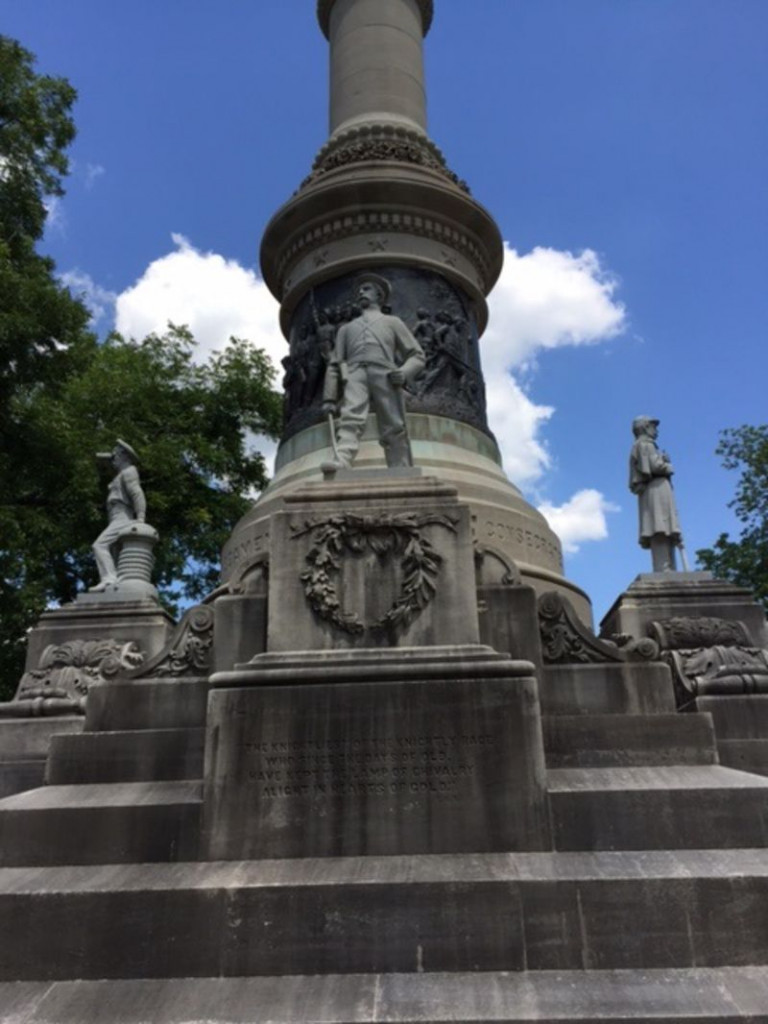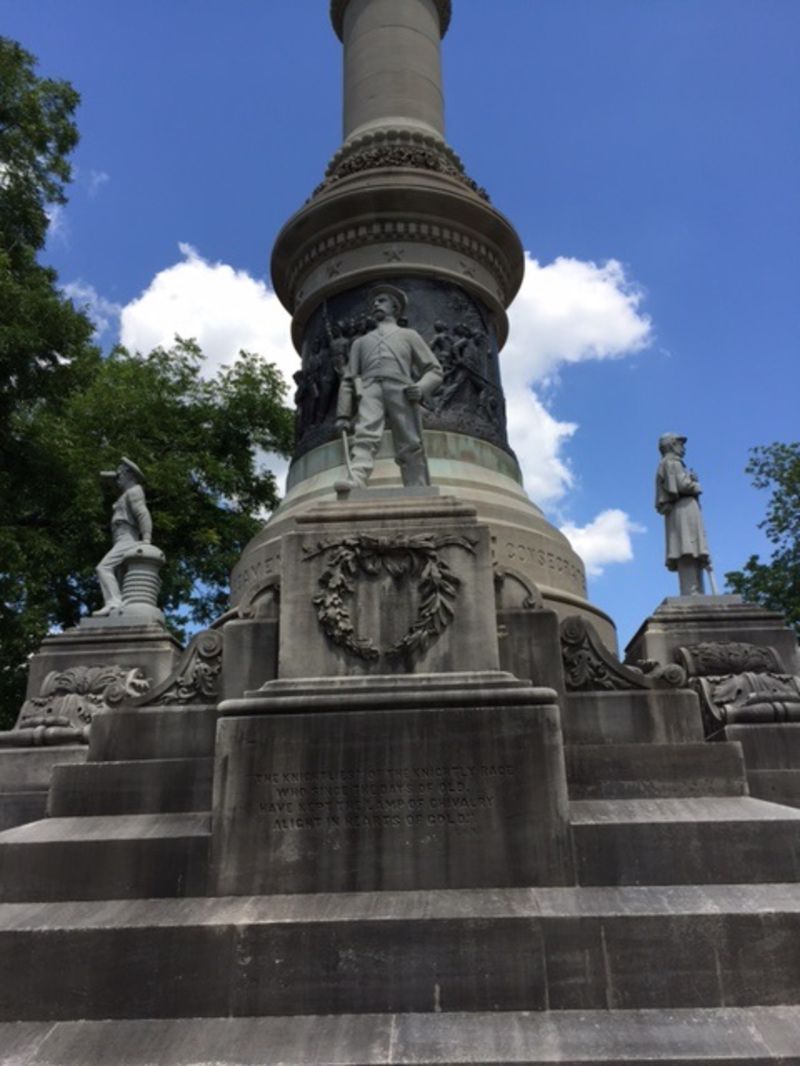New Orleans Mayor Mitch Landrieu delivered a powerful speech last month justifying his city’s removal of Confederate statues from public spaces. “These statues are not just stone and metal. They are not just innocent remembrances of a benign history,” Landrieu said. “These monuments purposefully celebrate a fictional, sanitized Confederacy; ignoring the death, ignoring the enslavement, and the terror that it actually stood for.”
Within days of Landrieu’s speech, Alabama Governor Kay Ivey took pains to extend the unnatural life of the Confederacy. Ivey signed a bill designed to preserve and cherish her state’s monuments to the death, enslavement and terror that Landrieu had just renounced.
The Alabama Memorial Preservation Act prohibits local governments or civic groups from removing historical monuments from public property if the monuments have been in place for at least 40 years.
Republican State Senator Gerald Allen, who proposed the bill, issued a statement denying that the bill was an attempt to keep the malignant specter of the Confederacy alive. “Contrary to what its detractors say, the Memorial Preservation Act is intended to preserve all of Alabama’s history — the good and the bad — so our children and grandchildren can learn from the past to create a better future,” he said.
Conservatives began seeking ways to protect Confederate memorials after then-governor Robert Bentley, in the wake of the church shooting in Charleston, South Carolina, in 2015, had Confederate flags removed from Alabama’s capitol grounds in Montgomery.
The 40-year timeline of the memorial legislation guarantees that any Confederate symbols erected before or during the state’s mid-20th-century resistance to civil rights will be preserved.
Today, Alabama’s place in American civil-rights history is a tourist draw. Montgomery, where Martin Luther King Jr. rose to greatness, features a Freedom Rides Museum, at the site of the bus station where civil-rights activists were assaulted by mobs, and a Rosa Parks Museum. The Alabama tourism department suggests a four-day “Civil Rights Trail Itinerary” through the state.
Alabama markets its racial crucible, but still can’t bear to get beyond it. In 2004 Lee Warner, then executive director of the Alabama Historical Commission, resigned from the commission, complaining that other members were less than eager to memorialize the civil-rights struggle.
The Freedom Rides and Parks got their respective museums, but the shadows of Jefferson Davis and Robert E. Lee still loom over the state — Davis from a place of honor just outside the state capitol, where his statue presides.
Meantime, black children continue to move through abysmally underachieving high schools named for Davis and Lee. Like Mississippi, Alabama continues to observe a combined state holiday jointly honoring King and Lee, a slave owner who fought to maintain totalitarian tyranny over black people. It’s an occasion both to begrudge King’s achievements, and to thwart them.
If white supremacy in America refuses to die, it’s in part because too many white politicians insist on filling its decaying lungs with breath. The Memorial Preservation Act is only the latest attempt to resuscitate the corpse.
That the law’s proponents were too cowardly to admit what they were doing — they just love old stuff — might be considered incremental progress. But as Landrieu acknowledged, there is no decent way to compromise with the Confederacy. The statues and school names, trace elements of tyranny and treason, must go.
“The Confederacy was on the wrong side of history and humanity,” Landrieu said, using words that should be carved deep into the marble stairs where the final Selma-to-Montgomery march concluded in 1965. “It sought to tear apart our nation and subjugate our fellow Americans to slavery. This is the history we should never forget and one that we should never again put on a pedestal to be revered.”



